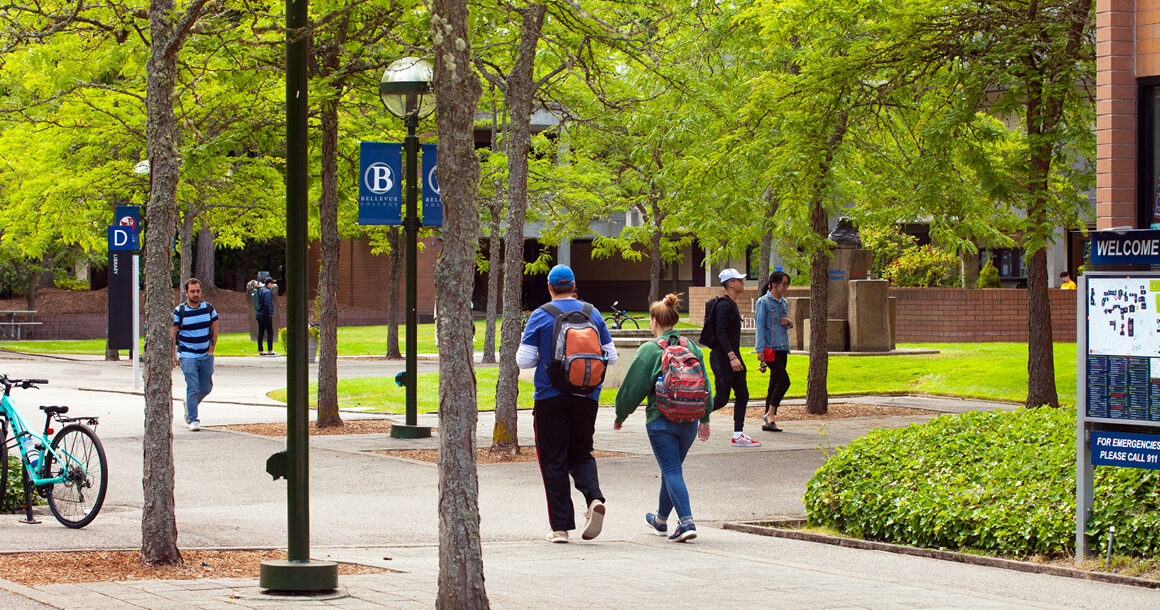Diversity, Equity, and Inclusion
We strive to create a vibrant campus community that supports a diverse student body, faculty and staff.

Introduction
As an essential part of our mission and goals, pluralism is promoted in all aspects of college life. By enriching student life through leadership opportunities, personal learning and cultural experiences, we are committed to building a pluralistic and diverse campus community that fosters creativity, innovation and student success.
Departments and Offices
Office of Diversity, Equity, and Inclusion
This office supports and advances the College’s commitment to diversity and pluralism.
Disability Resource Center
DRC provides advocacy and classroom accommodations, including specialized materials, technology and equipment for students with disabilities.
Multicultural Services
This program provides support services to promote academic success for American students of African, Asian, Hispanic and Native descent. The programs have shown measurable success. Through special recruitment programs of the MCS office, total enrollment of students of color has gone from 11 percent in 1990 to 29 percent in 2004. The retention rate for students of color who have been through mentoring and tutoring programs is greater than that for the college as a whole. And 39 percent of BC’s 2004 graduating class comprised students of color, compared to 29 percent in the general student population.
Title IX
Title IX of the Education Amendments of 1972 is an all-encompassing federal law that prohibits gender-based discrimination in educational institutions that receive federal funds.
Student Groups
Campus Events
The events calendar provides details on in-person and virtual events.
Student Affinity Groups
Our Student Affinity Coordinators are student leaders who support students and student organizations in their Affinity group, plan and host events that celebrate culture and heritage, raise awareness and build community, all while embodying the College’s Institutional Commitment to Inclusion.
Student Leadership Opportunities
Explore some of the unique student leadership opportunities across the campus.
Student Organizations
BC has a wide array of student organizations and clubs that focus on academic, cultural, and religious topics, among other subjects.
Employee Groups
Affinity Groups
Affinity Groups are voluntarily formed and play a vital role in articulating, promoting, and supporting the diversity, equity, and inclusion goals of the college. Their primary focus is to develop and improve the campus climate by increasing the presence of diverse faculty and staff.
Diversity Caucus
Brings together students, faculty, administrators and staff to improve diversity on campus through mentoring, participation in decision-making groups, cultural celebrations and more.
Affirmations of Tolerance
Affirmation of Inclusion
Bellevue College is committed to maintaining an environment in which every member of the campus community feels welcome to participate in the life of the college, free from harassment and discrimination. We value our different backgrounds at BC, and students, faculty, staff members, and administrators are to treat one another with dignity and respect. (Adopted 1992)
Pluralism Compact
View the pluralism compact, the college’s commitment to maintaining an environment in which every member of the campus community feels welcome to participate in the life of the college, free from harassment and discrimination. (Adopted 2002)
Diversity Terms and Definitions
Diversity includes all the ways in which people differ, and it encompasses all the different characteristics that make one individual or group different from another. It is all-inclusive and recognizes everyone and every group as part of the diversity that should be valued. A broad definition includes not only race, ethnicity, and gender—the groups that most often come to mind when the term “diversity” is used—but also age, national origin, religion, disability, sexual orientation, socioeconomic status, education, marital status, language, and physical appearance. It also involves different ideas, perspectives, and values.
It is important to note that many activists and thinkers critique diversity alone as a strategy. For instance, Baltimore Racial Justice Action states: “Diversity is silent on the subject of equity. In an anti-oppression context, therefore, the issue is not diversity, but rather equity. Often when people talk about diversity, they are thinking only of the “non-dominant” groups.”
SOURCE: UC Berkeley Center for Equity, Inclusion and Diversity, “Glossary of Terms” (page 34 in 2009 Strategic Plan). Baltimore Racial Justice Action, “Our Definitions” (2018).
Coming soon.
Authentically bringing traditionally excluded individuals and/or groups into processes, activities, and decision/policy making in a way that shares power.
SOURCE: OpenSource Leadership Strategies
Coming soon.
Coming soon.
A social process by which individuals or groups are (intentionally or unintentionally) distanced from access to power and resources and constructed as insignificant, peripheral, or less valuable/privileged to a community or “mainstream” society. This term describes a social process, so as not to imply a lack of agency. Marginalized groups or people are those excluded from mainstream social, economic, cultural, or political life. Examples of marginalized groups include, but are by no means limited to, groups excluded due to race, religion, political or cultural group, age, gender, or financial status. To what extent such populations are marginalized, however, is context specific and reliant on the cultural organization of the social site in question.
SOURCE: The University of British Columbia’s Equity & Inclusion Glossary of Terms, citing The SAGE Encyclopedia of Qualitative Research Methods
Often the preferred collective term for referring to non-White racial groups. Racial justice advocates have been using the term “people of color” (not to be confused with the pejorative “colored people”) since the late 1970s as an inclusive and unifying frame across different racial groups that are not White, to address racial inequities. While “people of color” can be a politically useful term, and describes people with their own attributes (as opposed to what they are not, e.g., “non-White”), it is also important whenever possible to identify people through their own racial/ethnic group, as each has its own distinct experience and meaning and may be more appropriate.
SOURCE: Race Forward, “Race Reporting Guide” (2015).
Coming soon.
Coming soon.
